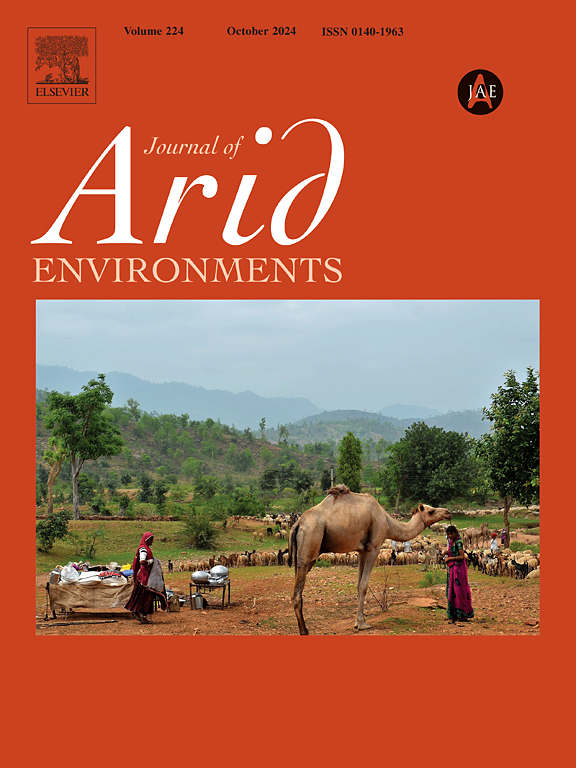Local ecological knowledge on preferred vegetation of African savanna elephants in the semi-desert highlands of northwest Namibia
IF 2.6
3区 环境科学与生态学
Q2 ECOLOGY
引用次数: 0
Abstract
The Northern Highlands of northwest Namibia are a particularly remote and arid landscape, where wildlife, habitats and local communities are increasingly at risk from future climate change events. There has previously been minimal research on the population of African savanna elephants (Loxodonta africana) in these Highlands. The Highlands are located just to the west of Etosha National Park. One potential factor influencing the movement of elephants from the Park into the Highlands is their food preferences. The aim of this study was to determine the preferred forage species for elephants in the Highlands. The study benefited from local ecological knowledge of community game guards, and extensive field patrols to assess the most preferred trees of elephants. Our findings indicate clear selection preference for African star chestnut (Sterculia africana), and Commiphora species such as blue-leaved corkwood (Commiphora glaucescens). These species grow on steep mountain slopes and elephants are climbing slopes to browse those trees. Our results indicate that some tree species are much less preferred, most of which tend to be located in valleys or lower slopes. This suggests that a major factor in the increase in elephant population in the Northern Highlands is the preferred vegetation available on the mountain slopes compared to the vegetation on the flat landscape of Etosha.
纳米比亚西北部半沙漠高地非洲稀树草原象偏爱植被的当地生态知识
纳米比亚西北部的北部高地是一个特别偏远和干旱的地区,那里的野生动物、栖息地和当地社区越来越多地受到未来气候变化事件的威胁。以前对这些高地上非洲草原象(Loxodonta africana)种群的研究很少。高地就在埃托沙国家公园的西边。影响大象从公园进入高地的一个潜在因素是它们的食物偏好。本研究的目的是确定高地大象的首选饲料种类。这项研究得益于当地社区狩猎警卫的生态知识,以及广泛的实地巡逻,以评估大象最喜欢的树木。我们的研究结果表明,非洲星栗(Sterculia africana)和蓝叶软木(Commiphora glaucescens)等Commiphora物种有明显的选择偏好。这些物种生长在陡峭的山坡上,大象爬上山坡来吃这些树。我们的研究结果表明,有些树种不太受欢迎,大多数树种倾向于位于山谷或较低的斜坡上。这表明,北部高地大象数量增加的一个主要因素是,与埃托沙平坦景观的植被相比,山坡上的植被更受青睐。
本文章由计算机程序翻译,如有差异,请以英文原文为准。
求助全文
约1分钟内获得全文
求助全文
来源期刊

Journal of Arid Environments
环境科学-环境科学
CiteScore
5.70
自引率
3.70%
发文量
144
审稿时长
55 days
期刊介绍:
The Journal of Arid Environments is an international journal publishing original scientific and technical research articles on physical, biological and cultural aspects of arid, semi-arid, and desert environments. As a forum of multi-disciplinary and interdisciplinary dialogue it addresses research on all aspects of arid environments and their past, present and future use.
 求助内容:
求助内容: 应助结果提醒方式:
应助结果提醒方式:


